Elevated and underground gas pipelines: features of the device and gaskets
Fuel is supplied to the consumer by arranging a gas distribution system, a complex of interconnected facilities and communications. Part of the system are above-ground and underground gas pipelines through which fuel flows to the points of use - in residential buildings and at enterprises.
The choice of place for laying pipes depends on a number of criteria that are analyzed at the design stage. Gas can come to private houses in different ways: by laying pipes in the ground or above the ground. Consider both methods and features of their choice.
The content of the article:
General piping rules
Gas pipelines are pipe lines, supporting and protective elements, additional equipment. They serve to transport "blue fuel" from a source or gas distribution system to the place of consumption.
At the installation site, gas communications are divided into two large categories:
- aboveground - going over the surface of the earth at a certain distance, mounted on special supports, placed in casings and cases;
- underground - placed in the ground, in specially dug trenches.
In modern construction, both methods of pipe laying are used.
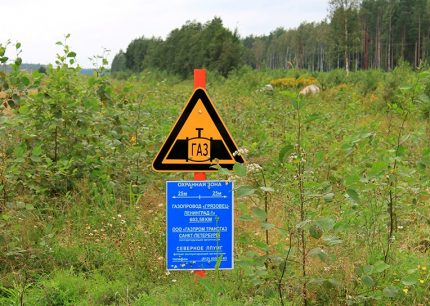
The nameplates are painted in different colors. They can be white with a blue or red border, just blue, but the “signature” color of any gas equipment is yellow.
What determines the choice of communications
A special commission is responsible for the design of the new gas pipeline, which determines the route of the pipeline, the method of its construction, and the construction site of the gas distribution system.
When choosing a laying method, the following criteria are taken into account:
- population of the territory where the gas pipeline is planned to be stretched;
- the presence in the territory of already stretched underground utilities;
- soil type, type and condition of coatings;
- consumer characteristics - industrial or household;
- the possibilities of all kinds of resources - natural, technical, material, human.
An underground installation is considered to be preferable, which reduces the risk of accidental damage to pipes and ensures a stable temperature regime. This type of practice is practiced more often if you need to bring gas to residential areas or detached buildings.
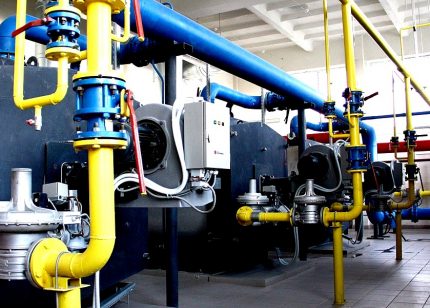
In rare cases gas pipes it is allowed to mask under a concrete floor - in laboratories, places of public catering or consumer services. For safety reasons, the gas pipeline is placed in anticorrosive insulation, poured with cement mortar, and in places where it exits, it is placed in reliable cases that ensure stability.
Features of the device gas lines
When the purpose of the gas pipeline is clear, it is easier to choose the method of its installation or installation material. For example, if you need to connect a detached cottage to the highway, pre-analyze the terrain, take soil samples, calculate the distance and the shortest path, look for ways to save resources.
Let us consider in more detail the technical and legal aspects of the construction of these types of gas pipelines - underground and aboveground.
Option # 1 - underground gas pipeline
When laying underground utilities, it is important to calculate in advance all the nuances: the length of the highway, the depth of the trench, the type of pipe material.
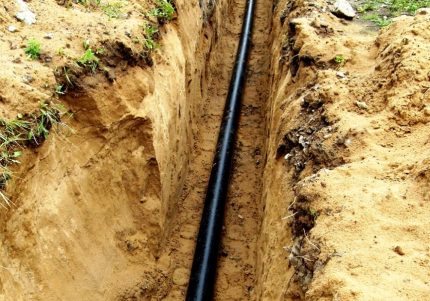
If the territory is deserted, without roads and buildings, the depth allowed is reduced to 0.6 m
On the contrary, the trenches will have to be deepened if the following factors are identified on the site:
- difficult soil and climatic conditions;
- increased dynamic loads;
- The groundwater.
Dynamic loads are typical for cities and industrial zones - these are sharp temperature fluctuations, the presence of highways, tram and railway lines.

If underground gas pipelines intersect with other utilities, you must observe certain distances between them:
- 0.1 m or more - to rain or drainage;
- 0.2 m or more vertically - to drains, sewers or heat pipes;
- 0.5 m or more - to a telephone, network or electric cable.
The last distance can be shortened if both mains - gas and electric - are enclosed in protective cases.
Reliable cases for reinforcing protection are also used if gas routes under the ground cross railway tracks or freeways. At the same time, the ends of the cases are sealed - packed with pre-tarred linen strands, and then corked with bitumen.
Not far from the intersection, at a distance of no more than 1 km, shallow wells are pulled out and shut-off cranes are installed in them. Annular gas pipelines require two disconnecting devices, while dead-end pipelines require one that is located on the fuel supply side.
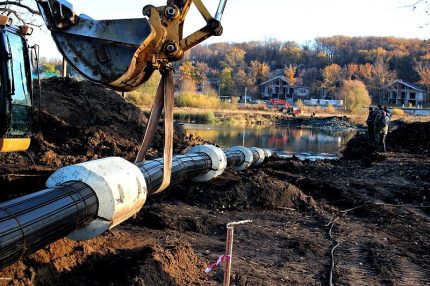
To save resources and increase the speed of work, it is allowed to lay 2 or more pipelines in one trench. They are located on the same level or in steps so that the possibility of quick access and repair is maintained. The distance between the pipes up to 30 cm in diameter is at least 0.4 m.
In some cases, a slope should be observed, for example, if raw gas is introduced into the building. When installing pipes in freezing soil, condensate collectors are installed, and then the slope should lead in their direction.
So that there is no sagging of the pipeline, which provokes bending of pipes and deformation of the joints, prevent soil subsidence in the trench. To do this, a solid bed of solid rocks is laid tightly on the bottom, and then a layer of sand.
Installation Order:
Digging trenches is not the only way to install an underground gas pipeline. There is also a trenchless laying method - horizontal drilling.
It reduces installation costs by 25-30% and has the following advantages:
- significantly reduces the time;
- maintains established communications and road surfaces;
- protects the environment, including planting.
Briefly about the drilling process: create a pilot well, expand to the specified parameters, concrete walls, stretch polymer pipes for the gas pipeline.
But in any case, underground pipelines are more expensive than overhead pipelines, and require increased resource costs in case of repair. It is more difficult to find an emergency section in buried highways, so increased demands are placed on the installation and protection of pipes.
The rules regarding the operation of gas pipelines can be found in “The rules of technical operation and labor safety requirements in the gas industry of the Russian Federation”.
Option # 2 - overhead gas pipeline
Elevated gas pipelines are installed where there are no conditions for underground installation or it is recognized as inappropriate. In the design and construction of industrial networks are based on the requirements SNiP 2.09.03-85 and SNiP II-89-80.
For the installation of pipes, supports, columns, trestles and shelves made of non-combustible materials are used. Installation can be done along the walls of buildings, but not all. For example, for production facilities of categories B, D, D, gas pipelines of no more than 0.6 MPa can be carried out, and lines of any pressure cannot be used for child care facilities, schools and hospitals.
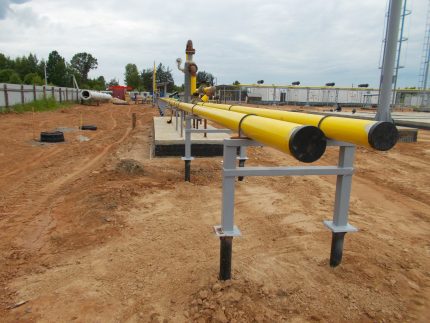
On the walls of residential buildings and public buildings only low pressure overhead gas pipelines - no more than 0.3 MPa. It is also impossible to lay gas pipelines if the walls of buildings of categories A and B are sheathed with metal panels or polymer thermal insulation.
High-pressure gas pipelines are laid along the walls of production facilities of fire hazard categories B, G, D. Pipes are mounted above the window and doorways, if the building is multi-story - above the windows of the upper floor.

The requirements for the height of the overhead gas pipelines are set out in SNiP II-89-80. The distance from the ground to the bottom of the pipe or protective case is 0.35 m if the structure is installed on low supports. For groups of pipes with a width of more than 1.5 m, the height increases to 0.5 m.
If the pipes are placed on high supports, the standards are as follows:
- in pedestrian areas - 2.2 m;
- at the intersection with motorways - 5 m;
- at the intersection with tram tracks - 7.1 m;
- at the intersection with trolley bus wires - 7.3 m.
The height at the intersection of the internal railways is adjustable GOST 9238.
Special types of steel are used for the production of pipes for surface applications, wall thickness - at least 2 mm Polyethylene pipe material for elevated gas pipelines is not used.
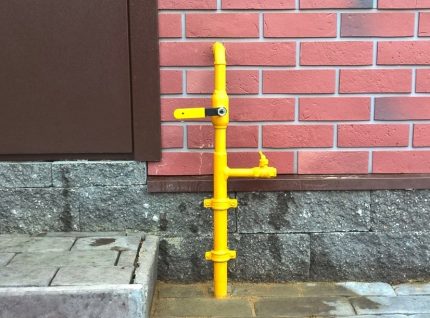
For mains supplying untreated gas, a slope of at least 3% is provided to the side of the condensate collectors.
The distance to overhead power lines, as well as a joint installation with electric cables, is regulated by the PUE.
The choice of distances between the fixed supports is subject to the requirements SNiP 2.04.12-86. If the diameter of the pipes is up to 30 cm, then the maximum distance is 100 m. With increasing diameter, the distance also increases - it is calculated by the formula.
Conclusions and useful video on the topic
The modern method is trenchless laying and repair:
How to quickly dig a trench:
More details about the trench method of laying pipes:
In order to establish an uninterrupted supply of gas to the consumer, it is important to choose the correct way to install the gas pipeline and carry out work in accordance with regulatory requirements. For a private household, an underground pipe laying method is preferable, which guarantees maximum protection against accidental damage and other people's interference.
If you have your own opinion on this issue, or you can supplement our material with valuable information, please leave your comments in the block below. There you can ask our experts a question or participate in a discussion of the material.

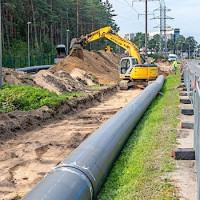 Requirements for laying a gas pipeline in settlements: depth and rules for laying an elevated and underground pipeline
Requirements for laying a gas pipeline in settlements: depth and rules for laying an elevated and underground pipeline 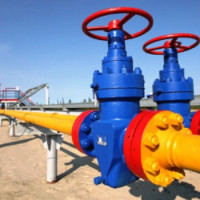 Gas pipeline looping: its functions and features of arrangement for a gas pipeline
Gas pipeline looping: its functions and features of arrangement for a gas pipeline  Gas on the border of the site - what does it mean? Features of connecting to an existing gas pipeline
Gas on the border of the site - what does it mean? Features of connecting to an existing gas pipeline 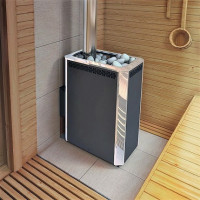 Gas in a non-residential building: features of gasification of non-residential premises
Gas in a non-residential building: features of gasification of non-residential premises 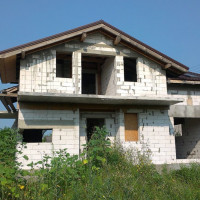 Is it possible to connect gas to an unregistered house: features of the connection and design of “unfinished”
Is it possible to connect gas to an unregistered house: features of the connection and design of “unfinished”  Is it possible to carry gas to the garage: features of gasification of garage spaces
Is it possible to carry gas to the garage: features of gasification of garage spaces  How much does it cost to connect gas to a private house: the price of organizing gas supply
How much does it cost to connect gas to a private house: the price of organizing gas supply  The best washing machines with dryer: model rating and customer tips
The best washing machines with dryer: model rating and customer tips  What is the color temperature of light and the nuances of choosing the temperature of the lamps to suit your needs
What is the color temperature of light and the nuances of choosing the temperature of the lamps to suit your needs  Replacement of a geyser in an apartment: replacement paperwork + basic norms and requirements
Replacement of a geyser in an apartment: replacement paperwork + basic norms and requirements